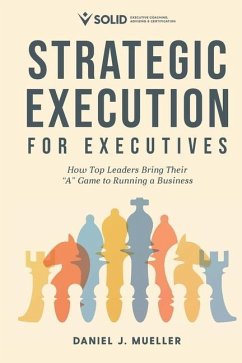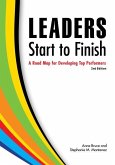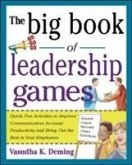Strategic Execution for Executives: How Top Leaders Bring Their "A" Game to Running a Business is about the art and science of making things happen from the top. The ability to execute with excellence is one of the major markers of a great executive. Conversely, poor execution results in short-term employment. You could say that consistently positive execution is table stakes to playing at the executive level. If you are reading this, and are an executive, you likely have significant expertise in this area. However, chances are you could stand to improve in a few of these competencies. This book will look at various aspects of executive execution and give you ways to capitalize on your strengths, address areas of weakness, and hopefully uncover any blind spots you may have. Execution is the root of the word "executive," and excellence in this area is the minimum criterion for success as a business leader. Your credibility depends on the results you get. That said, consider this statistic: "More than 64 percent of C-level executives from 250 midsized to large companies in the United States and the European Union have said that being able to execute, to 'react quickly to changing business opportunities, models, technologies, and processes is critical for their success, ' and yet is nearly impossible to achieve." As an executive, you are relentlessly hounded to produce great quarter-over-quarter execution. Pressured from all sides, with little time for missed expectations, it is no wonder that turnover is so high in the executive ranks. My estimate-based on significant research, conversations with top business leaders, and first-hand experience with more than 1,500 executives-is that one in five newly appointed executives gets fired or quits in their first year. The intense, seemingly impossible challenges facing you are increasing at a rapid rate. This is due in no small part to the ever-increasing speed at which organizations are moving, fueled by a dizzying array of technological advances. The expectations for execution have never been higher for boards, CEOs and the executive team.As a senior executive coach, I have witnessed scores of executives fail in their roles due to poor execution. That is what prompted me to write this book. My hope is that in some small way during our time together, I will help you to improve in this critical area. But before you dive into the first chapter, please take the assessment provided later in this introduction. This will give you an idea of where you stand. Then, if you have limited time, you can simply read those sections where you scored the lowest. If you are engaged with an executive coach, I suggest you go over the results together and develop an action plan for improving in your weakest area. You can also do this with a mentor. If you don't have a coach or a mentor, then you have already identified a gaping hole in your executive execution. No professional sports athlete would even think of taking the field without a strong team of advisors. Neither should you. I am not "selling" you on executive coaching. In fact, you will find this book devoid of any kind of "pitch" for coaching beyond this: Take your executive role seriously enough to invest time working with a mentor, trusted advisor, or executive coach. Books will only get you so far. There is no more powerful relationship for the executive than one where you can gain objective, unvarnished feedback on your performance from a live human being who is wholly invested in your success.
Bitte wählen Sie Ihr Anliegen aus.
Rechnungen
Retourenschein anfordern
Bestellstatus
Storno








